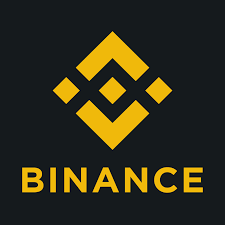When it comes to providing means of storing, sending, and receiving money, banks and their affiliated institutions, have enjoyed a monopoly for centuries.
They (especially central banks which allegedly are owned powerful families) have the authority to influence countries and their governments. We will not go into the level of control as this paves the way for conspiracy theories which though not proven – are not farfetched.
So, it’s only expected that when some new and unknown entity threatens their prosperity, they start to react.
Blockchain frenzy
How banks are responding is evident by how they are fervently building their own blockchains. This, however, defeats the purpose of a having decentralized system.
Bitcoin and cryptocurrencies get their appeal not just because they are very secure. But because unlike fiat money, they are not heavily regulated and can be mathematically restricted.
The 21 million unit limit on Bitcoin by default places it closer to the status of gold (which is also not infinite). But what happens when all are mined in 2041?
Bitcoin’s current ‘value’ of over $30 000 (adjusted), could move up again, according to the traditional laws of supply and demand as it becomes rare.
To unlock more value the creators will split it again. The first major splits (forks) gave rise to Litecoin and Bitcoin Cash. Both cryptocurrencies are racing to newer heights daily.
How banks operate
Now back to the banks – they make money from our deposits and these deposits are backed up by our reserve banks.
Reserve banks lend retail banks money which they essentially just print. The banks must ‘turn it’ and pay it back with interest (repo rate).
So, technically we ‘empower’ banks by depositing our money so they can invest the funds in all sorts of mechanisms. Such mechanisms include the credit and loans to you, your businesses, equities, and property.
Then, they also invest in high-risk investment vehicles like currency trading, derivatives (futures). They are essentially the biggest regulated and legal Ponzi-schemes. They also make a significant amount of the daily fees they charge you.
A quick example
Let’s quickly put things into context. A bank with over a million customers transacting daily. Let’s say they charge you a 10 cent (conservative figure) transaction fee for depositing, withdrawing from another bank, or an intra-bank transfer.
They then make 0.10c x 1 000 000 = 100 000 units of the currency on the day. This equates to 1,2 million Euros, Dollars, Rands, or Yen annually. And that is just off your transactional fees!
Then they also charge you monthly service/maintenance fees. Those are to cover the convenience of you having an account and, for services like online banking.
This is what cryptocurrencies can potentially wipe away from banks we all go the digital currencies route. Granted, how you acquire and transfer Cryptocurrencies are not as straightforward as receiving paper money – yet.
That, coupled with the stigma around ‘Cryptos’, means there is still a barrier to entry for the ‘open-source’ monetary system.
Banks will try and bring about their own blockchains to address security concerns around making transactions. For them, however, it would still be business as usual when it comes to the charges.
Birth of Fintech
Some newer financial institutions, however, are already progressing in the favour of you and me – one such is the European based N26 Bank.
We often end up paying for things all month without even having to go to an ATM. It works as a traditional bank would, however, allows the (smart) card to be used as a credit card (backed by Mastercard) would.
This allows you to quickly purchase goods online, book events, flights ticket, and accommodation. Basically, all things you still can’t do with your debit card.
In countries like Sweden and Estonia, card and digital systems have been a thing for a long time now.
Some of these Fintechs are adopting or partnering with Cryptos companies to deliver their services. One such as the relationship the one between a German bank and the crypto Ripple.
It would be interesting to see what governments and financial institutions do to ‘protect’ their payment systems. Likewise, it will be equally fascinating to observe how they adapt in general to the new digital era upon us.


